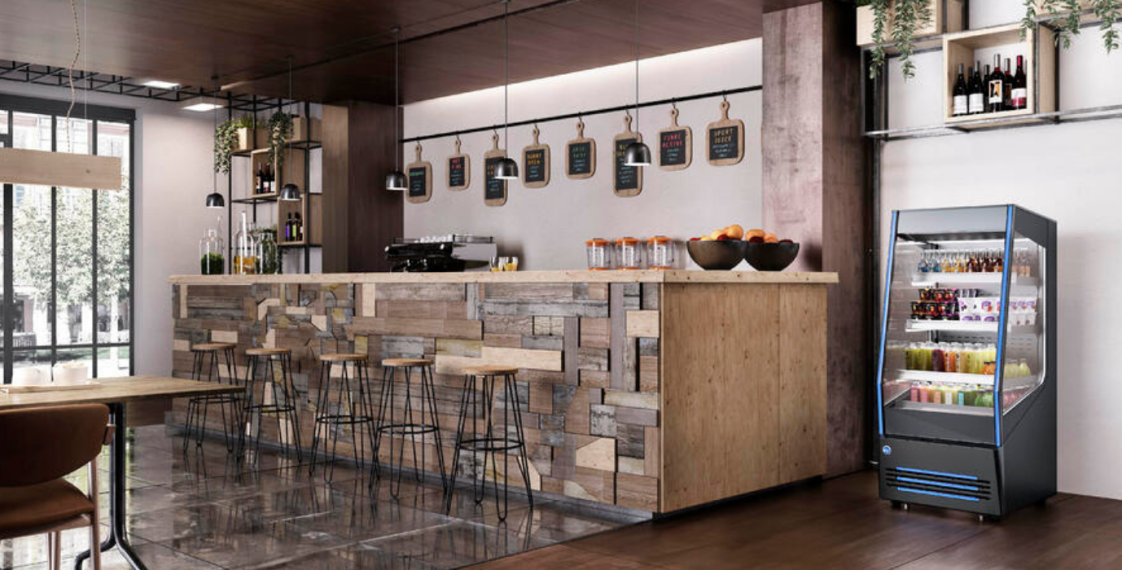Characteristics of an excellent plug-in refrigeration system

Personalising the shopping experience has become a crucial element for companies that wish to stay relevant in today's fast-paced market.
As technology progresses, this phenomenon is moving towards the hyper-personalisation of items available for purchase, where the purchasing data, information, opinions and behaviours as well as social connections are analysed in ever-more depth to then be applied to custom refrigeration.
The most cutting-edge players within the food & beverage and HoReCa industries are adopting solutions designed to offer clients a customised, dynamic experience.
From traditional shops to concept stores, distribution is changing. Store owners are increasingly feeling the need to transform the physical look of their sales points as well as the services they offer, to ensure customers a top-level experience while optimising costs at the same time.
Elements that can make a difference
In addition the philosophy behind today's new visual merchandising techniques, it's important to focus on elements that can make a difference, satisfying these principles and applying them harmoniously.
We’re talking about reliability, design (‘economic’ or ‘low cost’ sends the wrong message, upon first impression it conveys the idea that these plug-ins cost very little, while one may instead talk about energy efficiency), sustainability and customisation. All these elements play a fundamental role in the consumer's shopping experience.
Plug-in reliability
The reliability of a refrigerated display cabinet or case depends on its technical qualities and the materials used. Modern technologies, when applied, ensure greater efficiency, a longer lifecycle compared to standard plug-ins,
and thus savings on service costs and spare parts.
Negative touch points: Having defective, unreliable plug-in refrigerators that are unable to enhance the products they contain and the display space in general deprive the customer of the pleasure and thrill of shopping.
Design
HoReCa and food & beverage enterprises prefer clean, essential lines which make the products on display stand out, thereby increasing profit. Choosing more modern plug-ins helps align the aforementioned aesthetic needs and the chance to offer increasingly broad display areas that are compatible with the floor space they take up. This is then increasingly combined with LEDs that better illuminate products, enhancing brand awareness for the company while cutting energy costs as this type of lighting consumes less power.
Efficient, but that’s not all: the variable speed compressors (especially those with DC technology), smart control systems, electronic expansion valves, insulation, variable-speed doors and fans, are some of the key components that reduce energy consumption for refrigerated display cases.
We mustn’t forget changes to new refrigeration systems introduced by the F-Gas Regulation, another innovative element that offers significant savings in terms of energy consumption.
Savings
The above-mentioned use of LEDs makes it possible to keep energy use low, leading to a series of technological expedients that next-generation equipment guarantees, starting from an advantageous use of materials.
There’s more: variable speed compressors (especially those with DC technology), smart control systems, electronic expansion valves, insulation and variable-speed doors and fans are some of the key components that reduce energy consumption of refrigerated cabinets.
We mustn’t forget changes to new refrigeration systems introduced by the F-Gas Regulation, another innovative element that offers significant savings in terms of energy consumption.
Sustainability
Propane R290, as sold by several companies in recent years, is a much more efficient and ecologically-friendly product compared to traditional refrigerants.
Choosing a next-generation plug-in refrigerator cabinet or case, beyond the noticeable reduction in energy consumption (reaching close to 70% in some cases) leads to an over 30% decrease in emissions when compared to older models.
Customisation
When choosing new displays, brand managers and purchasing supervisors at companies in the food and beverage and HoReCa industry undoubtedly prefer manufacturers that focus on attention to detail as much as possible, able to offer customisation options with enhanced appeal, such as printing directly on the case's sheet metal.
It is also important to remember that not all stores can allow for ‘standard’ refrigerated display cabinets. As such, it’s essential for them to have a partner able to satisfy all their customisation needs in terms of equipment sizes and shapes, such as the lines in the IARP brand, part of the Epta group.
The high degree of customisation makes it possible to fully embrace the customer’s philosophy and to effectively meet all brand communication aspects.